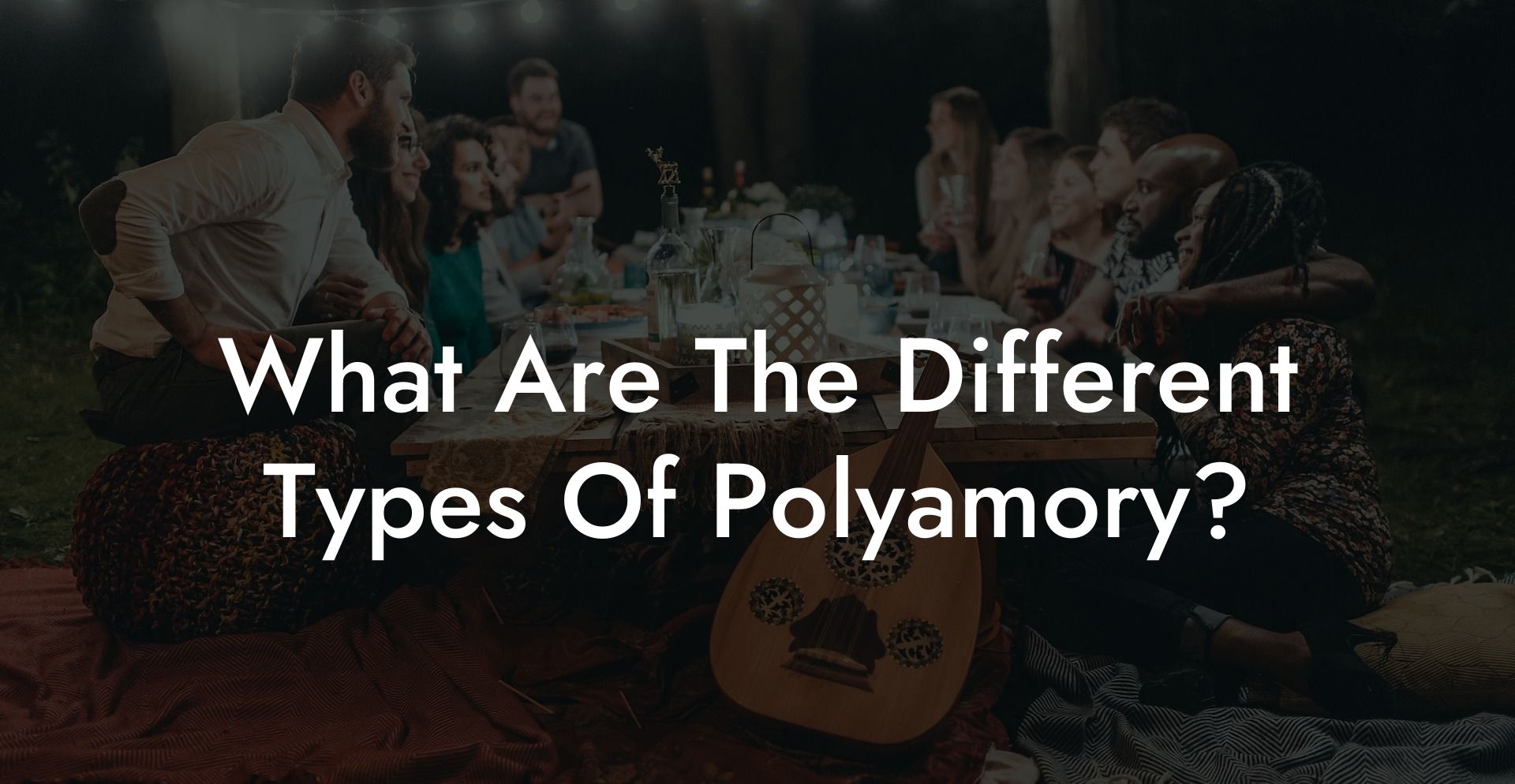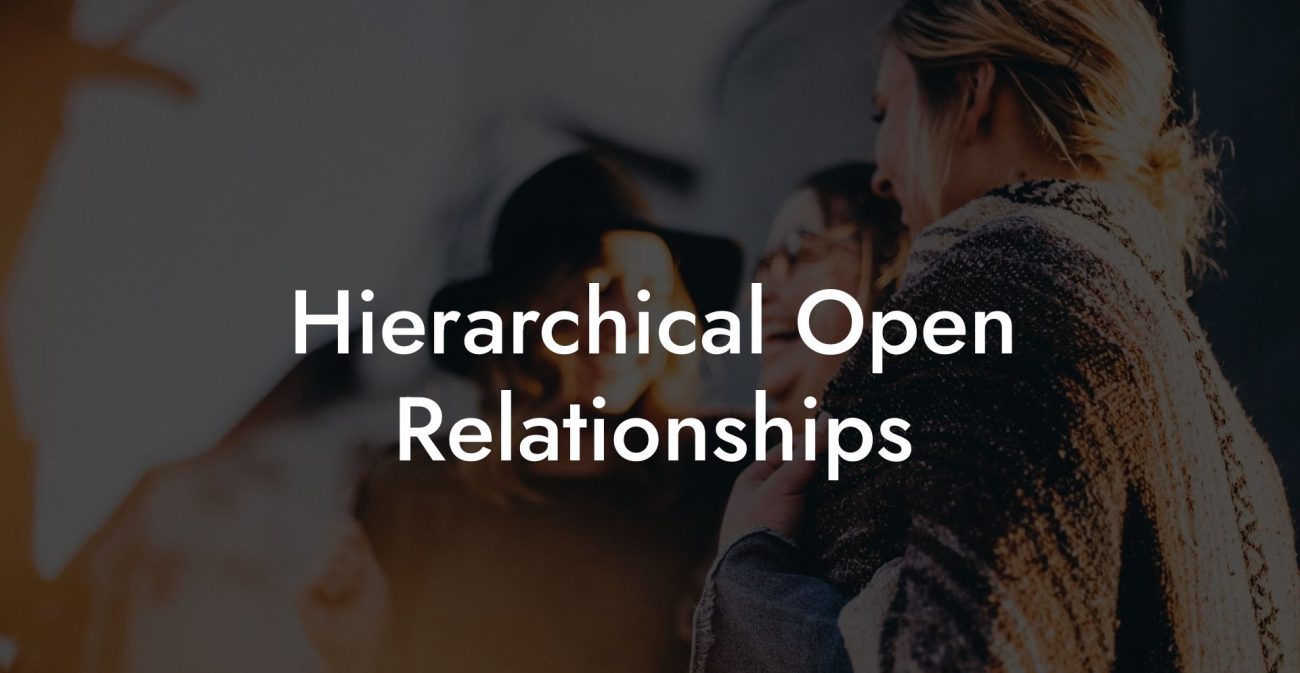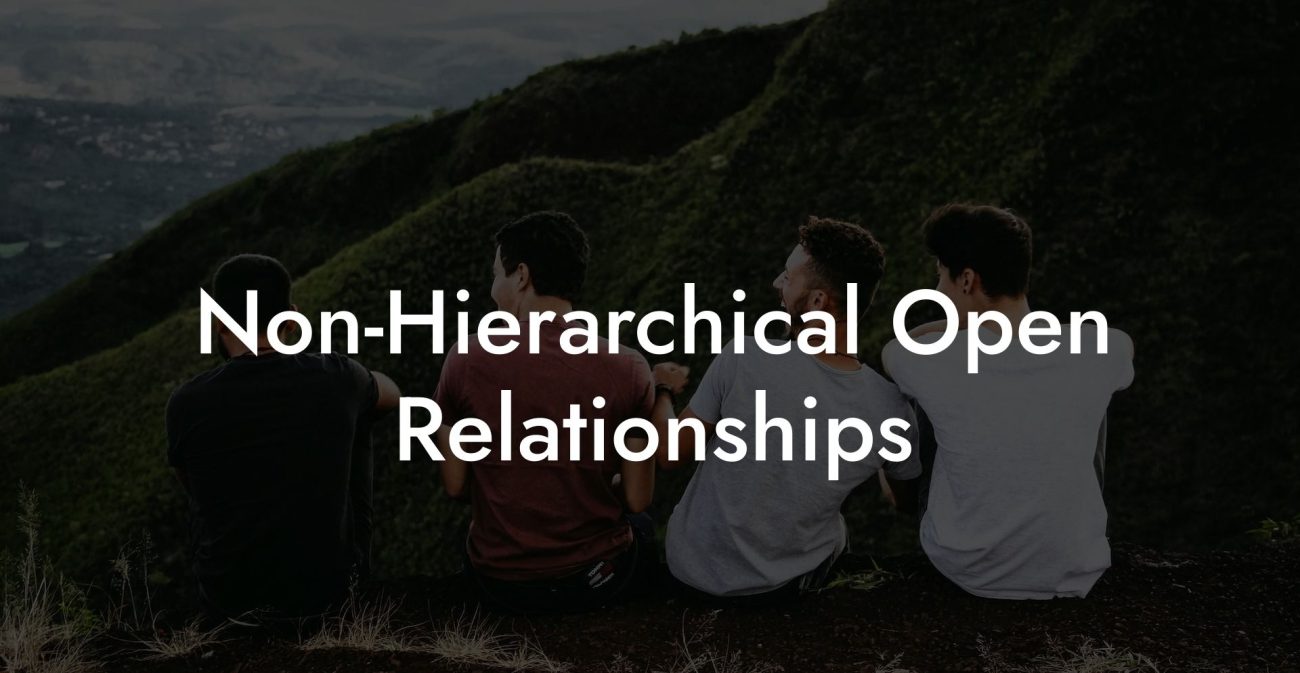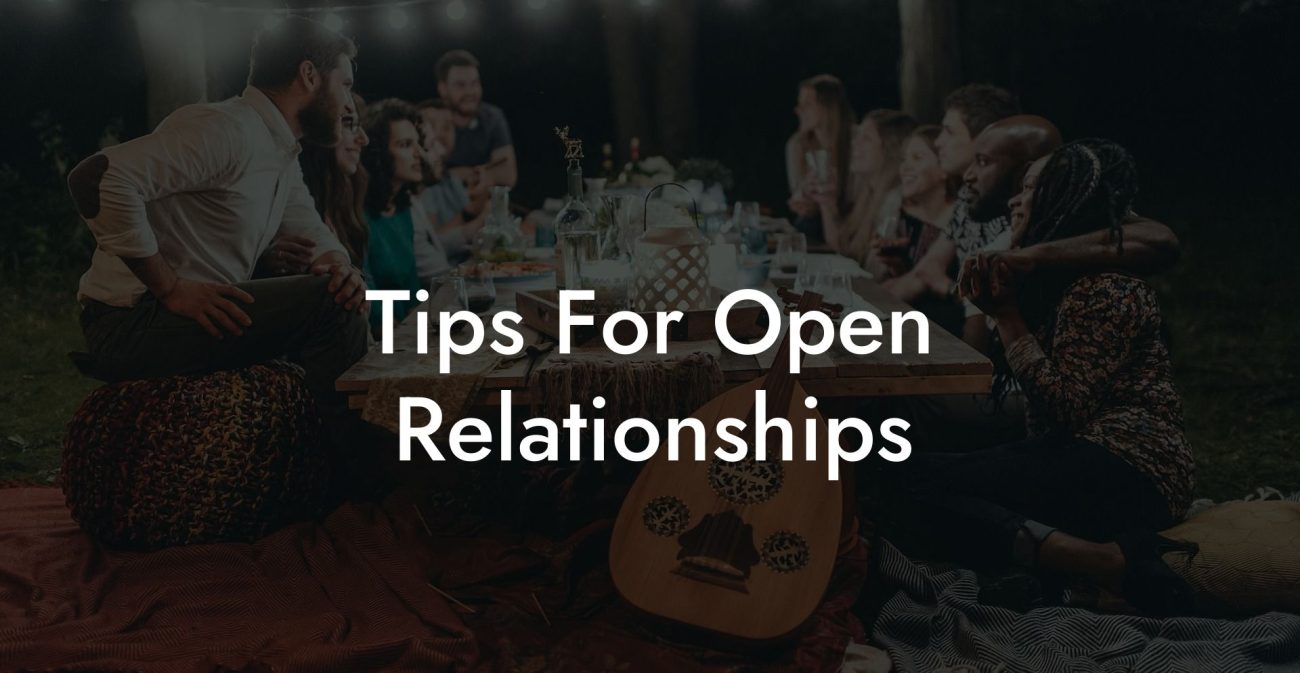Guide to What Are The Different Types Of Polyamory?

Polyamory, at its core, is about the capacity to love multiple people simultaneously in a consensual and ethical manner. However, not all polyamorous relationships are structured the same way. From hierarchical systems to egalitarian models and solo polyamory to relationship anarchy, there is no “one-size-fits-all” approach. In this guide, we’ll break down the various types of polyamory, examine their unique characteristics, and discuss how each model can impact your emotional well-being, communication dynamics, and lifestyle choices.
Have you ever wondered if monogamy is just a stupid little experiment? Open relationships, polyamory, relationship anarchy...find out which relationship dynamic suits you best with our one minute relationship test. See if you are just conforming to "societal norms". Reveal your truth >>
Quick Links to Useful Sections
- What Is Polyamory?
- Definition and Core Principles
- Types of Polyamory
- Hierarchical Polyamory
- Non-hierarchical polyamory
- Solo Polyamory
- Relationship Anarchy
- Other Variations and Hybrid Models
- Psychological and Emotional Considerations
- Emotional Intelligence and Self-Awareness
- Attachment Styles and Relationship Dynamics
- Managing Jealousy and Fostering Compersion
- Practical Tips for Choosing the Right Polyamorous Model
- Assess Your Personal Needs and Values
- Explore Different Models Through data-statistics-ethical-non-monogamy-open-relationships-polyamory/" target="_blank">research and Community Engagement
- Be Open to Experimentation and Growth
- FAQ: Your Questions on the Different Types of Polyamory Answered
What Is Polyamory?
Definition and Core Principles
Polyamory is the practice of engaging in multiple consensual romantic or sexual relationships at the same time, with the knowledge and consent of everyone involved. It is built on the principles of honesty, transparency, informed consent, and open communication. Rather than adhering to the traditional norm of monogamy, polyamory allows individuals to form diverse bonds that are tailored to their unique emotional and physical needs.
The key elements of polyamory include:
- Consent: Every relationship and encounter is entered into voluntarily, with all parties informed and in agreement.
- Communication: Ongoing, honest dialogue is essential to negotiate boundaries, share expectations, and resolve conflicts.
- Flexibility: Polyamorous arrangements often evolve over time, reflecting changes in needs and life circumstances.
- Respect for Autonomy: Each individual’s independence and personal growth are valued alongside the shared connection.
Types of Polyamory
Hierarchical Polyamory
Hierarchical polyamory is characterized by a clear prioritization of relationships. In this model, one relationship is designated as the primary partnership, often involving shared living arrangements, finances, or long-term commitments, while other relationships are considered secondary or tertiary. This structure helps to provide a stable foundation for the primary couple while still allowing for additional romantic or sexual connections.
Benefits: The primary partnership often serves as an anchor, offering emotional security and a strong base for decision-making. Clear boundaries can reduce confusion and provide structure.
Challenges: Hierarchical models may create feelings of inequality or jealousy among secondary partners, and the primary couple can sometimes become overly burdened with responsibilities.
Non-hierarchical polyamory
In non-hierarchical polyamory, all relationships are considered equal—there is no designated primary partner. Each relationship is valued on its own terms, and decisions are made collectively or on a case-by-case basis. This model emphasizes equality and fluidity, allowing the network of relationships to evolve without a fixed structure.
Benefits: non-hierarchical polyamory promotes a sense of equality and shared autonomy, reducing the pressure on one relationship to serve as the emotional or practical anchor.
Challenges: Without clear prioritization, it may be more difficult to coordinate time and resources, and conflicts can arise if expectations are not clearly communicated.
Solo Polyamory
solo polyamory is a model in which an individual maintains multiple romantic or sexual relationships while prioritizing their independence and autonomy. Solo poly individuals typically do not have a “primary” partner and may choose to live separately or keep their relationships compartmentalized. The focus is on personal freedom and self-reliance, even while engaging in multiple connections.
Benefits: Solo polyamory allows for high levels of personal autonomy and flexibility, enabling individuals to focus on self-growth while still enjoying diverse relationships.
Challenges: Without a primary partner to provide a central point of stability, some may experience feelings of isolation or struggle with balancing multiple relationships independently.
Relationship Anarchy
relationship anarchy is a philosophy that rejects conventional relationship hierarchies and labels. Those who practice relationship anarchy prioritize personal freedom, autonomy, and the creation of relationships based solely on individual needs and mutual agreements. There are no preset rules or hierarchies—every connection is unique and negotiated on its own merits.
Benefits: This model offers complete flexibility and the freedom to form connections that defy traditional boundaries, encouraging creativity and authentic self-expression.
Challenges: Without predefined structures, some individuals may find it challenging to manage expectations, leading to potential misunderstandings or instability.
Other Variations and Hybrid Models
Beyond the primary models, there are several hybrid and niche variations within polyamory. Some common variations include:
- Parallel Polyamory: Partners maintain separate lives with minimal overlap, focusing on individual growth while still engaging in a polyamorous network.
- Triads and Quads: These are specific configurations where three or four individuals form a closed, interconnected relationship network, often with all members equally involved.
- Open Polyamory: A flexible form of polyamory where individuals have multiple relationships without strict definitions or hierarchy, often sharing a fluid approach to boundaries and commitments.
These variations offer additional options for those seeking to tailor their relationship models to best fit their personal needs and lifestyle.
Psychological and Emotional Considerations
Emotional Intelligence and Self-Awareness
Navigating multiple relationships requires high levels of emotional intelligence and self-awareness. Understanding your own emotions, recognizing your triggers, and being able to communicate effectively are essential for managing the complexities of polyamory. Developing these skills can lead to more satisfying and resilient relationships.
Attachment Styles and Relationship Dynamics
Attachment theory plays a significant role in how we form and maintain relationships. In polyamory, different attachment styles (secure, anxious, or avoidant) can influence the dynamics within each relationship. Recognizing your attachment style and that of your partners can help in managing expectations and fostering healthy connections.
Managing Jealousy and Fostering Compersion
Jealousy is a natural emotion, but in polyamorous relationships, it must be managed constructively. Compersion—the feeling of joy when a partner experiences happiness with someone else—is a counterbalance to jealousy. Strategies for managing these emotions include regular check-ins, mindfulness practices, and, if needed, professional counseling.
Practical Tips for Choosing the Right Polyamorous Model
Assess Your Personal Needs and Values
The first step in choosing a polyamorous model is a deep self-assessment. Consider your relationship goals, how much independence you value, and your capacity for managing multiple emotional connections. Ask yourself:
- Do I prefer a clearly defined primary relationship, or do I value complete equality among all partners?
- How important is personal autonomy and independence to me?
- What are my communication strengths, and where do I need support?
- How do I handle jealousy, and what strategies can I use to manage it?
Explore Different Models Through data-statistics-ethical-non-monogamy-open-relationships-polyamory/" target="_blank">research and Community Engagement
Engage with online communities, read books, listen to podcasts, and attend workshops focused on polyamory. This exposure can help you understand the nuances of each model and determine which aligns best with your personal values and lifestyle.
Be Open to Experimentation and Growth
Remember that your relationship model doesn’t have to be set in stone. Many individuals find that their preferences evolve over time. Allow yourself the flexibility to experiment with different configurations, learn from your experiences, and adjust your approach as needed.
FAQ: Your Questions on the Different Types of Polyamory Answered
1. What is polyamory?
Polyamory is the practice of engaging in multiple consensual romantic or sexual relationships simultaneously, with the full knowledge and consent of all parties involved.
2. What are the main types of polyamory?
The main types of polyamory include hierarchical polyamory (with a primary partner and secondary relationships), non-hierarchical polyamory (where all relationships are equal), solo polyamory (maintaining independence while engaging in multiple relationships), and relationship anarchy (rejecting traditional labels and hierarchies).
3. How do hierarchical and non-hierarchical polyamory differ?
In hierarchical polyamory, one relationship is designated as primary, often involving deeper commitment and shared responsibilities, while in non-hierarchical polyamory, all relationships are considered equal without a set priority.
4. What is solo polyamory?
Solo polyamory is a model where an individual maintains multiple relationships while preserving their independence and personal autonomy, often without designating any single relationship as primary.
5. What is relationship anarchy?
Relationship anarchy is a philosophy that rejects conventional relationship hierarchies and labels, emphasizing complete autonomy and fluid, negotiated connections between individuals.
6. Can I mix different polyamorous models?
Yes, many people adopt hybrid models that combine elements of hierarchical and non-hierarchical polyamory, or they may evolve from one model to another as their needs and circumstances change.
7. How do I choose the right polyamorous model for me?
Evaluate your personal needs, values, and communication style. Engage with community resources, experiment with different models, and be open to evolving your approach as you gain experience.
Resources and Community Support: Your Next Steps
- "The Ethical Slut" by Dossie Easton & Janet Hardy – A seminal book that offers deep insights into ethical non-monogamy and managing diverse relationship models.
- "More Than Two" by Franklin Veaux & Eve Rickert – An in-depth guide providing practical advice for navigating complex relationship dynamics, including various forms of polyamory.
- Podcasts: Tune into "Multiamory" and "Polyamory Weekly" for engaging discussions and personal stories about polyamory.
- Online Communities: Join forums such as r/polyamory or specialized Facebook groups to exchange ideas and connect with like-minded individuals.
- Workshops and Webinars: Attend events focused on ethical non-monogamy and alternative relationship models to gain practical strategies and expand your network.
By exploring these resources and applying the practical strategies outlined in this guide, you can develop a well-rounded understanding of the different types of polyamory and choose the model that best aligns with your personal values and relationship goals. Embrace continuous learning, open communication, and self-reflection as you navigate the diverse landscape of polyamorous relationships.
Lost & confused by all of the terms, types and seemingly made up 3 letter acronyms?? We've got you. Check out our Ethnical Non-Monogamy Dictionary >>
Useful Interruption: Not sure which relationship vibe fits you best? Take our Relationship Test, it’ll give you the real insight into your natural relationship style. Then, dive into our binge-worthy guides (from the tried-and-true to the “wait, that’s a thing?”) and find the perfect relationship type for your life:
- Monogamy
- Open Relationships
- Ethical Non-Monogamy
- Solo Polyamory
- Non-Hierarchical Polyamory
- Hierarchical Polyamory
- Relationship Anarchy
- Swinging
Now back to the main article but yeah take the test...












